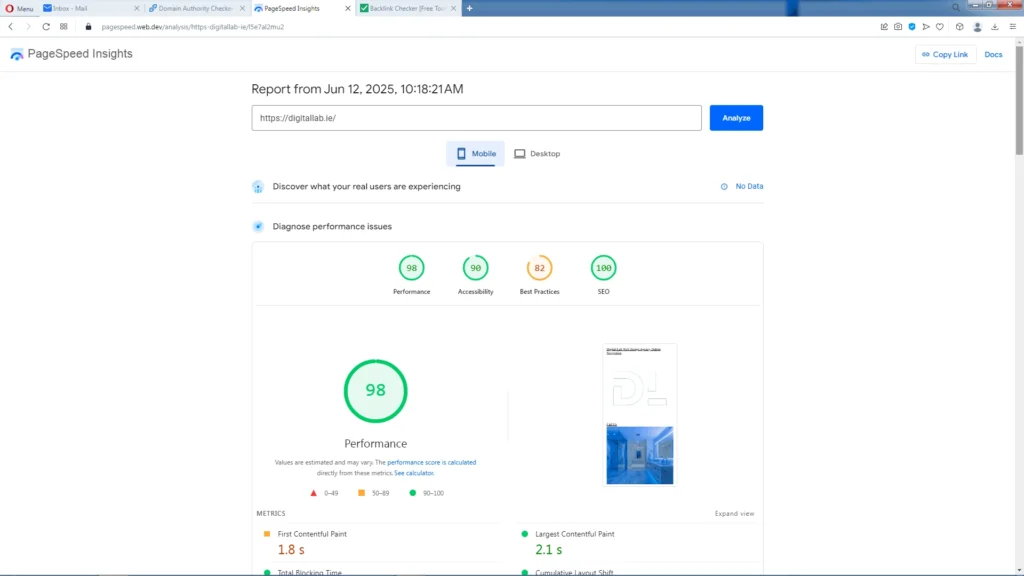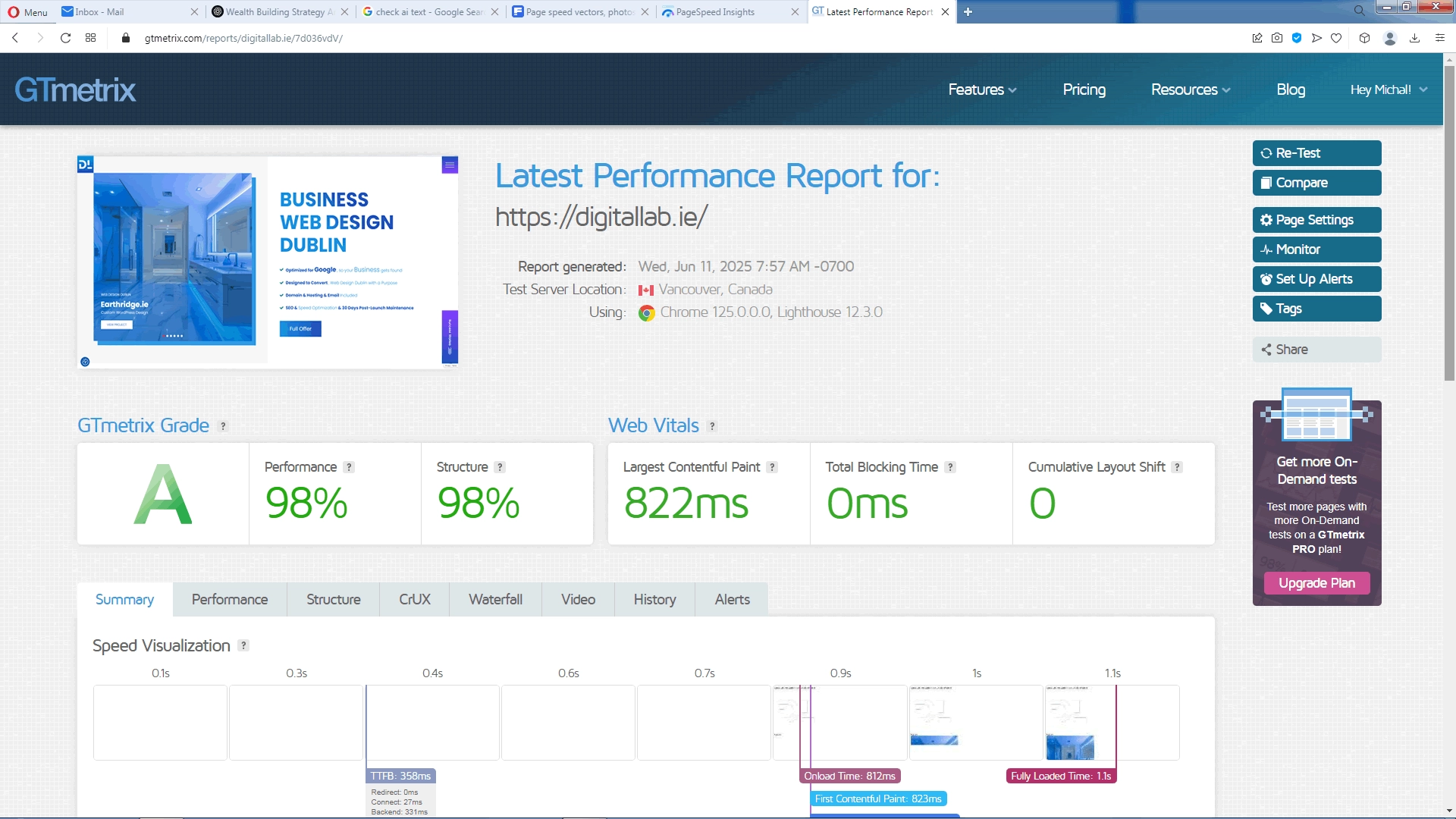Table of contents:
• Introduction to Web Design and Google Page Speed
• Why Site Speed Can’t Be Ignored
• What You Might Have to Let Go (or Rethink)
• So, What Does Work?
• Real Performance = Real Results
Web Design and Google Page Speed
Design and performance don’t always play nice. It’s a constant push and pull—on one hand, you want something visually striking. On the other, you need it to load fast, feel smooth, and rank well in Google.
At Digital Lab, we’ve spent a lot of time in that space between style and speed. Our most recent site scored 97 on mobile and 100 on desktop with Google PageSpeed Insights. That didn’t happen by magic. It came from a clear set of design choices—and yes, a few sacrifices.
If you’re planning a new website and want it to perform as well as it looks, here’s what you should expect.
Why Site Speed Can’t Be Ignored
You’ve got about three seconds—maybe less. That’s how long most people will wait before they click away from a slow site. On mobile? Even less patience.
Google’s taken notice. Page speed affects your ranking, especially for mobile users. But beyond search engines, it shapes how real people experience your site. No one sticks around to admire a great design if it takes forever to load.

What You Might Have to Let Go (or Rethink)
Some popular design trends just don’t play well with performance. Here’s where we usually draw the line—or at least look for leaner alternatives.
1. Animation Overload
Sure, a few moving parts can add personality. But large-scale animations, scroll effects, or motion-heavy elements? They tend to bog things down. We’re all for creativity, but not if it slows the entire experience.
2. Oversized Images
Those full-width hero images and background videos might look great in a concept—but in practice, they can crush your load time. We focus on modern formats (like WebP) and smart techniques like lazy loading. Your visuals still shine—just smarter.
3. Fancy Fonts and Icon Packs
Custom fonts are great for brand consistency, but loading three or four of them? Not worth it. We streamline to just what you need, without the bloat.
4. Bloated WordPress Plugins
This one’s a biggie. WordPress is brilliant—but plug in too many add-ons, and it turns sluggish. We stick with lightweight, purpose-built solutions to keep things humming along.
5. Features That Feel Cool… But Don’t Help Users
Think live chat bubbles, auto-playing videos, or interactive widgets. They’re tempting, but they can hit your score hard. We weigh every feature against how much value it brings to your visitor.
So, What Does Work?
High performance doesn’t mean boring design. It just means being deliberate.
- Start with mobile: Design with smaller screens and touch-first users in mind.
- Build light: Clean code, fewer requests, efficient CSS and JS handling.
- Compress everything: From images to scripts, every KB counts.
- Use great hosting: Fast servers with solid caching and CDN support make a big difference.
- Test as you go: Don’t wait until launch day to check how things are running.
These are all core to how we work at Digital Lab. We’ve built a process that bakes performance into the project from day one—not as an afterthought, but as a goal.

Real Performance = Real Results
Your website isn’t just a digital brochure—it’s your first impression, your storefront, your conversion funnel. If it drags, your users won’t stick around to see how clever your headline is or how nice your layout looks.
Fast websites earn more trust, show up higher in search results, and generate more leads or sales.
If you’re searching for a web design agency in Dublin that won’t make you choose between beauty and speed, you’re in the right place. At Digital Lab, we combine technical precision with sharp design—and we’ve got the PageSpeed scores to prove it.
Curious what your current site is capable of?
Head over to digitallab.ie and let’s talk about making your next website faster, stronger, and smarter from the ground up.
